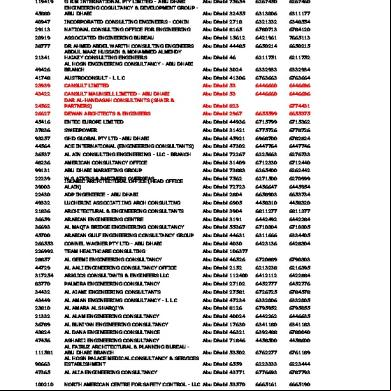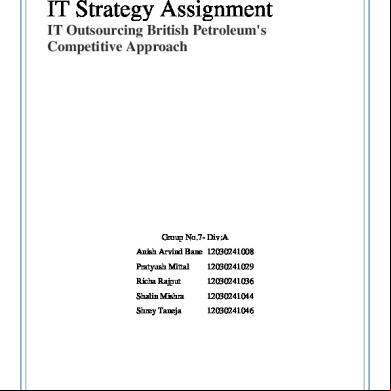Role Of Chamber Of Commerce 376t6f
This document was ed by and they confirmed that they have the permission to share it. If you are author or own the copyright of this book, please report to us by using this report form. Report 3b7i
Overview 3e4r5l
& View Role Of Chamber Of Commerce as PDF for free.
More details w3441
- Words: 1,188
- Pages: 5
ROLE OF CHAMBER OF COMMERCE A chamber of commerce is an autonomous organization of businesses and individuals aimed at promoting commerce and industry. They foster a greater sense of business community, identify emerging leaders, and advocate on behalf of businesses. They also provide quality services to help enhance their competitiveness and succeed in their businesses thereby contributing significantly to the economic progress of the nation. Local businesses are , and they elect a board of directors or executive council to set policy for the chamber. The board or council then hires a President, CEO or Executive Director, plus staffing appropriate to size, to run the organization. A chamber of commerce is not a governmental body or institution, and has no direct role in the writing and age of laws and regulations that affect businesses. It may however, act as a lobby in an attempt to get laws ed that are favorable to businesses. The first chamber of commerce that came into existence in the world was in Marseille, in 1599. With the development of businesses, different chambers sprouted all over the world. Each and every chamber is majorly and closely associated with the local businesses. Each and every chamber has its pre decided hip. hip may be in tens, or may extend to thousands and millions. Some chamber organizations in China report even larger hip numbers. Chambers of commerce can range in scope from individual neighborhoods within a city or may be a part of a larger international chamber of commerce. Any chamber hip is either voluntary or required by law and usually differs from chamber to chamber. Depending on the scale, various chambers chamber networks either nationally or internationally. International bodies like Eurochambres, the International Chamber of Commerce (ICC), Worldchambers or the American Chamber of Commerce Executives are few networks. Currently, there are about 13,000 chambers ed in the official Worldchambers
Network registry, and the chamber of commerce network is the largest business network globally. This network is informal, with each local chamber incorporated and operating separately, rather than as a chapter of a national or state chamber. Funding of the chambers may be done by the local government, non-profit, and some are a combination of the two. Chambers of commerce also can include economic development corporations or groups as well as tourism and visitors bureaus. Chambers of Commerce in India In India, chambers of commerce have been organized at both regional and national levels. 1. Regional Chambers of Commerce : These chambers deal with a particular region and member businesses are of the same region. Few of these are: i. ii. iii. iv. v. vi.
Indian Chamber of Commerce (Kolkata) Bengal Chamber of Commerce (Kolkata) Indian Merchants Chamber (Mumbai) Mawari Chamber of Commerce (Mumbai) Madras Chamber of Commerce (Chennai) Punjab, Haryana and Delhi Chamber of Commerce (New Delhi).
2. National Chambers of Commerce i. ii. iii. iv.
Federation of Indian Chambers of Commerce and Industry (FICCI) Confederation of Indian Industry (CII) Associated Chambers of Commerce and Industry (ASSOCHAM) All India Organisations of Employers (AIOE)
FICCI: The Federation of Indian Chambers of Commerce and Industry (FICCI) is an association of business organizations in India. Established in 1927, on the advice of Mahatma Gandhi by GD Birla and Purushottam Das Thakurdas, it is the largest, oldest and the apex business organisation in India. It is a nongovernment, not-for-profit organisation. FICCI draws its hip from the corporate sector, both private and public, including SMEs and MNCs. The
chamber has an indirect hip of over 2,50,000 companies from various regional chambers of commerce. It is involved in sector specific business policy consensus building, and business promotion and networking. It is headquartered in the national capital New Delhi and has presence in 11 states in India and 8 countries across the world. CII: The Confederation of Indian Industry (CII) is a non-government, not-for-profit, industry-led and industry-managed organisation, seeking to play a proactive role in India’s development process. The organisation works to create and sustain an environment conducive to the growth of industry in India, partnering industry and government alike through advisory and consultative processes. The confederation is headquartered in New Delhi. Adi Godrej was elected as the president for the year 2012-13. Chandrajit Banerjee is the Director General of the confederation. CII claims to usher change by working closely with government on policy issues, enhancing efficiency, competitiveness and expanding business opportunities for industry through a range of specialized services and global linkages. It also provides a platform for sectoral consensus building and networking.
FUNCTIONS/ ROLE OF CHAMBER OF COMMERCE The role played by Chamber of Commerce to foster positive business sentiment is done through following : Representation hold regular dialogues with government to advocate, provide on, and help fine-tune policies and legislations affecting business practices. serve on statutory boards and government committees to help formulate policy guidelines and set standards that will enhance business climate and ’ competitiveness. Networking
forge strategic alliances with local and foreign business organisations to establish and develop mutually beneficial relationships via Memoranda of Understanding, t Consultative Committees, etc. a global network of Chambers of Commerce to facilitate cooperation (eg. ASEAN-CCI, CACCI, etc) provide leadership to co-ordinate ’ efforts to trouble-shoot, address, solve common problems/issues affecting business operations. hip Development Build up a hip base through recruitment of new and retention of existing ones. Launching hip drives to supplement on-going recruitment Sustaining ’ interest by offering quality services, enhancing hip status and privileges. encouraging co-operation and fraternity amongst by organising social and sports events. Information Services provide relevant business information to such as information on business opportunities, technological advancements, government rules and regulations, etc. maintain a trade library for ’ use, conduct market surveys and economic research and circulate findings to through newsletters, economic bulletins, general hip circulars or IT tools. Trade and Business Development Publish a directory of , their businesses and capabilities process trade enquiries. Operate a business matching center to provide services such as arranging buyer-seller meetings, providing facilities and secretarial services for meetings between trade visitors and .
Identify trade and investment opportunities and help maximise these by organising trade and investment missions, organising trade fairs and exhibitions and co-ordinating ’ participation in trade shows. Training and Consultancy/ Advisory Services Operate a training center that will offer human resource development programmes, skills and technological upgrading courses, etc organise meetings, conferences, workshops, seminars to provide with fora for exchange of views and experiences offer arbitration/mediation/conciliation services to help resolve trade disputes. encourage member companies to enhance competitiveness through quality management – eg. set up quality circles; adopt “good housekeeping” practices; help to attain ISO standards. As time has continued to grow short for some businesses while digital communications methods have increased, many chambers are dealing with decline in number of . But as connections and networks continue to grow in importance, organizations like a chamber of commerce serve a very unique and important purpose locally.
Submitted by: Shivangi Taneja Division: A Roll Number: 50
Network registry, and the chamber of commerce network is the largest business network globally. This network is informal, with each local chamber incorporated and operating separately, rather than as a chapter of a national or state chamber. Funding of the chambers may be done by the local government, non-profit, and some are a combination of the two. Chambers of commerce also can include economic development corporations or groups as well as tourism and visitors bureaus. Chambers of Commerce in India In India, chambers of commerce have been organized at both regional and national levels. 1. Regional Chambers of Commerce : These chambers deal with a particular region and member businesses are of the same region. Few of these are: i. ii. iii. iv. v. vi.
Indian Chamber of Commerce (Kolkata) Bengal Chamber of Commerce (Kolkata) Indian Merchants Chamber (Mumbai) Mawari Chamber of Commerce (Mumbai) Madras Chamber of Commerce (Chennai) Punjab, Haryana and Delhi Chamber of Commerce (New Delhi).
2. National Chambers of Commerce i. ii. iii. iv.
Federation of Indian Chambers of Commerce and Industry (FICCI) Confederation of Indian Industry (CII) Associated Chambers of Commerce and Industry (ASSOCHAM) All India Organisations of Employers (AIOE)
FICCI: The Federation of Indian Chambers of Commerce and Industry (FICCI) is an association of business organizations in India. Established in 1927, on the advice of Mahatma Gandhi by GD Birla and Purushottam Das Thakurdas, it is the largest, oldest and the apex business organisation in India. It is a nongovernment, not-for-profit organisation. FICCI draws its hip from the corporate sector, both private and public, including SMEs and MNCs. The
chamber has an indirect hip of over 2,50,000 companies from various regional chambers of commerce. It is involved in sector specific business policy consensus building, and business promotion and networking. It is headquartered in the national capital New Delhi and has presence in 11 states in India and 8 countries across the world. CII: The Confederation of Indian Industry (CII) is a non-government, not-for-profit, industry-led and industry-managed organisation, seeking to play a proactive role in India’s development process. The organisation works to create and sustain an environment conducive to the growth of industry in India, partnering industry and government alike through advisory and consultative processes. The confederation is headquartered in New Delhi. Adi Godrej was elected as the president for the year 2012-13. Chandrajit Banerjee is the Director General of the confederation. CII claims to usher change by working closely with government on policy issues, enhancing efficiency, competitiveness and expanding business opportunities for industry through a range of specialized services and global linkages. It also provides a platform for sectoral consensus building and networking.
FUNCTIONS/ ROLE OF CHAMBER OF COMMERCE The role played by Chamber of Commerce to foster positive business sentiment is done through following : Representation hold regular dialogues with government to advocate, provide on, and help fine-tune policies and legislations affecting business practices. serve on statutory boards and government committees to help formulate policy guidelines and set standards that will enhance business climate and ’ competitiveness. Networking
forge strategic alliances with local and foreign business organisations to establish and develop mutually beneficial relationships via Memoranda of Understanding, t Consultative Committees, etc. a global network of Chambers of Commerce to facilitate cooperation (eg. ASEAN-CCI, CACCI, etc) provide leadership to co-ordinate ’ efforts to trouble-shoot, address, solve common problems/issues affecting business operations. hip Development Build up a hip base through recruitment of new and retention of existing ones. Launching hip drives to supplement on-going recruitment Sustaining ’ interest by offering quality services, enhancing hip status and privileges. encouraging co-operation and fraternity amongst by organising social and sports events. Information Services provide relevant business information to such as information on business opportunities, technological advancements, government rules and regulations, etc. maintain a trade library for ’ use, conduct market surveys and economic research and circulate findings to through newsletters, economic bulletins, general hip circulars or IT tools. Trade and Business Development Publish a directory of , their businesses and capabilities process trade enquiries. Operate a business matching center to provide services such as arranging buyer-seller meetings, providing facilities and secretarial services for meetings between trade visitors and .
Identify trade and investment opportunities and help maximise these by organising trade and investment missions, organising trade fairs and exhibitions and co-ordinating ’ participation in trade shows. Training and Consultancy/ Advisory Services Operate a training center that will offer human resource development programmes, skills and technological upgrading courses, etc organise meetings, conferences, workshops, seminars to provide with fora for exchange of views and experiences offer arbitration/mediation/conciliation services to help resolve trade disputes. encourage member companies to enhance competitiveness through quality management – eg. set up quality circles; adopt “good housekeeping” practices; help to attain ISO standards. As time has continued to grow short for some businesses while digital communications methods have increased, many chambers are dealing with decline in number of . But as connections and networks continue to grow in importance, organizations like a chamber of commerce serve a very unique and important purpose locally.
Submitted by: Shivangi Taneja Division: A Roll Number: 50










